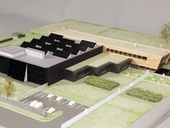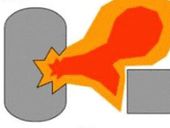Forestry and forest management plays many roles in the landscape and in the socio-economic area. Forests represent a landscape stabilizer, the best preserved part of the landscape of predominantly natural character with significant application of natural, spontaneous process. It also serves as a source of material benefits to human society. The wood-producing function of forests was questuioned in this country in recent years. Above all, leaders of various environmentalist movement are demanding ever greater proportion of forests without economic activity. However, forestry is afflicted by such influences by decades and the aim of this paper is to demonstrate possible implications of these trends for forestry and subsequent economic sectors.
Archiv článků od 11.3.2013 do 3.6.2013
The paper analyses available data sources on the use of renewable energy in Czech households from which it is possible to derive the current distribution of these sources in the Czech residential sector. Available data provide information about biomass, solar and heat pump installations. The data indicate that the most frequently used renewable energy source among Czech households is biomass, which is the main source of heating in approximately 8 % of inhabited dwellings. Heat pumps are installed in 0.5 % and solar energy is used in at least 1 % of all the Czech inhabited dwellings. It also indicates that these renewable energy sources are far more used in detached family houses rather than in apartment houses. Overall, most of the renewable energy sources used in Czech households are in the Central Bohemian Region, the least in Karlovy Vary Region and the capital city of Prague. Although the datasets do not provide enough evidence to derive any reliable development trends, they provide useful information on the minimal distribution of these resources in the past 10 years and also the effect of selected policy instruments to support the use of these resources on Czech households in comparison with the situation before they came into force.
The paper analyses available data sources on the use of renewable energy in Czech households from which it is possible to derive the current distribution of these sources in the Czech residential sector. Available data provide information about biomass, solar and heat pump installations. The data indicate that the most frequently used renewable energy source among Czech households is biomass, which is the main source of heating in approximately 8 % of inhabited dwellings. Heat pumps are installed in 0.5 % and solar energy is used in at least 1 % of all the Czech inhabited dwellings. It also indicates that these renewable energy sources are far more used in detached family houses rather than in apartment houses. Overall, most of the renewable energy sources used in Czech households are in the Central Bohemian Region, the least in Karlovy Vary Region and the capital city of Prague. Although the datasets do not provide enough evidence to derive any reliable development trends, they provide useful information on the minimal distribution of these resources in the past 10 years and also the effect of selected policy instruments to support the use of these resources on Czech households in comparison with the situation before they came into force.
This report is the result of processing all the available statistical sources that relate to the development of small combustion devices supply on the domestic market and its structure. Department of Resources and Energy Statistics acceded to this investigation due to the lack of comprehensive information about the number of devices, and to demand for this type of information.
The University Centre of Energy Efficient Buildings is a newly established interdisciplinary research institute of Czech Technical University focused to energy efficient buildings having the healthy indoor environment that, at the same time, are environmentally friendly. The main objective for the Centre establishment is the development of technologies for the energy demand reduction and the efficient improvement of natural sources concerning new constructions and reconstructions of existing buildings. The objective is to be achieved by the holistic approach, the expert knowledge concentration from the field of architecture, construction, mechanical engineering, information technologies, and hygiene of indoor environment and the top instrument equipment of the Centre.
In relation with the implementation of the revised EU Directive 2010/31/EU on the energy performance of buildings are currently changing some of Czech legal regulations and new methodology for energy performance assessment is introduced . This article focuses on an example rating the standard family house with conventional solution of building envelope and technical systems, using the new evaluation method. For this object will be also an obligation to issue an energy performance certificate as required by the Consolidated Act No. 406/2000 Coll., as amended.
The third year of European Solar Days in the Czech Republic opened. Press conference to launch the European Days of the Sun took place at the National Theatre on Tuesday, 30 April 2013 with the participation of a modest group of journalists. There was also a representative of the Czech Solar Team which will participate in solar bikes race called "The Sun Trip" - from Chambery in the France to the capital of Kazakhstan Astana. In parallel the solar bike was presented near to the National Theatre for public.
Next working day - 2 May 2013 - took place a project day named "The Sun is Life" in elementary school in Vsetin on Sychrov. Students dealed with the Sun as a source of energy, light and heat, as well as the Sun as a body in the Universe and the Sun as inspiration for artists.
While an actual map of the mean wind speed at the height of 100 m above ground (i.e. at the height of state-of-the-art "large" wind turbines) was created and published in 2007 – 2008, only less accurate older data were available for the conditions closer to the ground. This gap is filled by presented article and concurrently published map of the wind speed at the height of 10 m. Furthermore, other important aspects of wind conditions over the area of the Czech Republic are discussed. These results can form a useful tool for those interested in construction of small wind turbines.
To calculate the average wind speed at a height of 10 m above the surface the same procedure and the same input data as for “wind map” at a height of 100 m above the ground were used. The resulting wind map is a synthesis of three calculation models used for long time at the Institute of Atmospheric Physics AS CR: VAS, WAsP and PIAP.
The European Union is committed to reducing energy consumption in the built environment. Since the heating, ventilation and air conditioning (HVAC) represents approximately 11% of the total electricity consumption in Europe, these systems are an important part of the commitment of the EU. In this article, we discuss two specific aspects of HVAC energy efficiency, both are based on that understanding how the commercial buildings work in real life is the first step towards reducing energy consumption.
In connection with the implementation of the revised European Directive 2010/31/EU on the energy performance of buildings, certain legislative provisions such as Decree No. 148/2007, Coll. Replaced by Decree No. 78/2013, Coll. are currently amending. This article is focused on the changes associated with the energy certification of buildings, the "ENB", from the perspective of changes in the evaluation ENB.
The new standard CSN 75 5409 is valid from March 1st 2013. Technical Report on protection against Legionella will apply from May 1st 2013. In case of conflict of energy saving and hygiene prevails hygiene. Size of the hot water tank is chosen according to the requirement of heat pump. Volume of accumulation of solar systems is about 50 l / m 2 of collector area.
Czech legislation introduced special regime of responsibility and funding of recycling of the photovoltaic modules installed until 2012. The special regime was motivated by the fear that PV modules will remain in the field at the end of life as its owner will go bankrupt controlled.
For every other electronic devices their producers are responsible for recycling since 2005. For photovoltaic modules the producers responsibility in the Czech Republic starts from 2013. For the modules installed until 2012 the owners are responsible for recycling. Before June 30 2013 the owners must enter into contract with a recycling company dedicated to photovoltaic modules recycling, which must be founded by at least four manufacturers of electronic devices (not necessarily photovoltaic modules). The recycling company have to estimate a fee for recycling despite of that no company in the Czech Republic has experience with large-scale recycling of photovoltaic modules. The owners then must pay the fee between 2014 and 2019. Regarding 30-year lifetime of PV modules the recycling will only rarely occur before 2040.
There is no obligation to deposit the collected fees on a blocked account nor another restriction for its use. This implies there is fear the recycling company will go bankrupt controlled. The supposed problem was not solved it was only shifted to another level.
This report is the result of processing all the available statistical sources. Report contains just evaluation of statistical data. It cannot cover all the techno-economic issues and relations in the sectors, which go beyond the survey. The report includes data on molded fuels (briquettes and pellets) made from biomass (wood and plant), peat, coal and paper.
Energy Regulator Office is often alleged of setting feed-in-tarff (FiT) for photovoltaic of an undue advantage which later caused photovoltaic boom in 2009 and 2010. Based on comparison with FiT in Germany it is shown that the allegations are exaggregated. Probably the main cause of the photovoltaic boom was the fact that photovoltaics was ignored in the Czech Republic. In substance no discussion occurred about PV until the end of 2008, attention was focused on wind power. In addition, the development in 2009 was very rapid and it occurred at a time of political instability.
The paper focuses on the conditions of fire and risk connected with dust layer. The next part is about thermal degradation of biomass and heat transfer on dust layer. The next part shows test methods for flame spread. The connection of dust layer and possible secondary explosion. In the article is highlighted connection with space and equipment cleaning due to ČSN EN 60079-10-2.
zpět na aktuální články



















